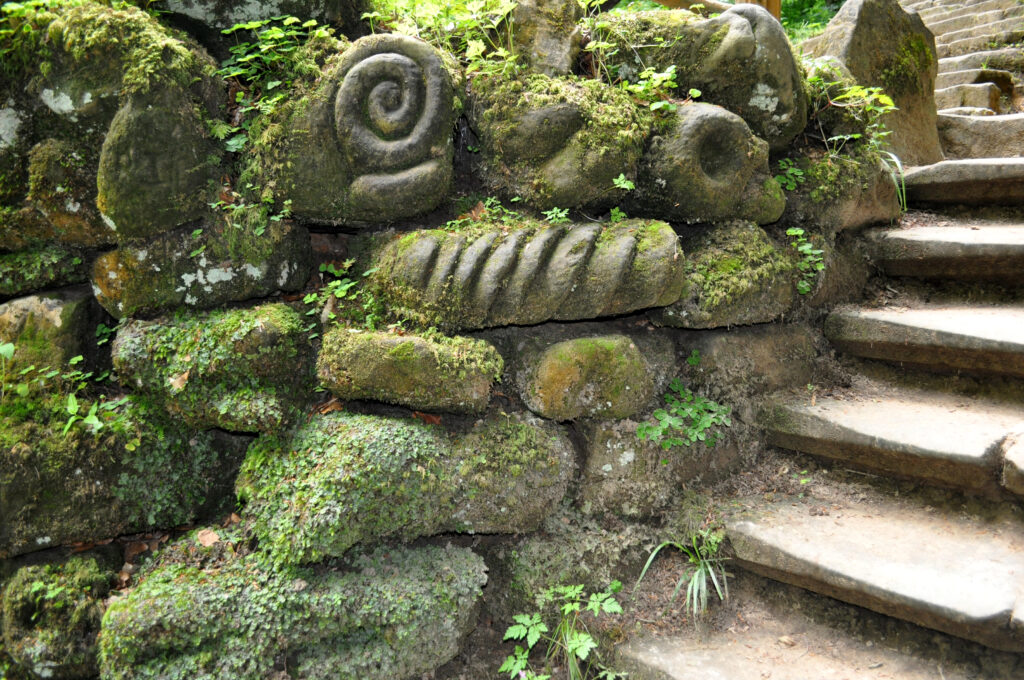At the Schéissendëmpel with its stone bridge, the water of the Black Ernz stream flows over some large boulders lying in the stream bed. They cannot be carried away by the flowing water, but are ground smooth by the sand, gravel and smaller boulders. This material comes from the geological layers of the surrounding slopes and plateaus. It is only transported during increased flow and is ground down in the process.
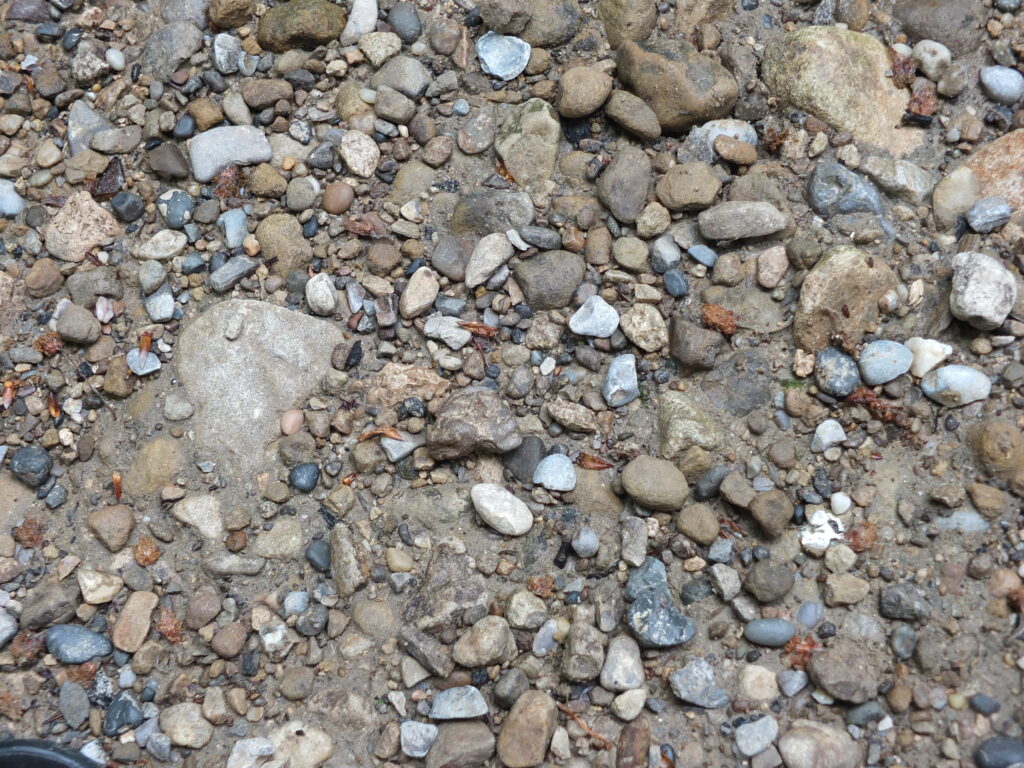
Looking downstream, steep sandstone walls can be seen on the left side of the valley. Here the Black Ernz flows close to the rock face, so that all fine-grained material at the foot of the slope has been washed away, leaving only large boulders. The right side of the valley is less steep and covered by regolith. Groundwater seeps out at the bottom of the valley and is used for drinking water.
The Black Ernz has almost completely cut through the layer of Luxembourg sandstone here. During the cutting, the valley widened due to rockfalls.
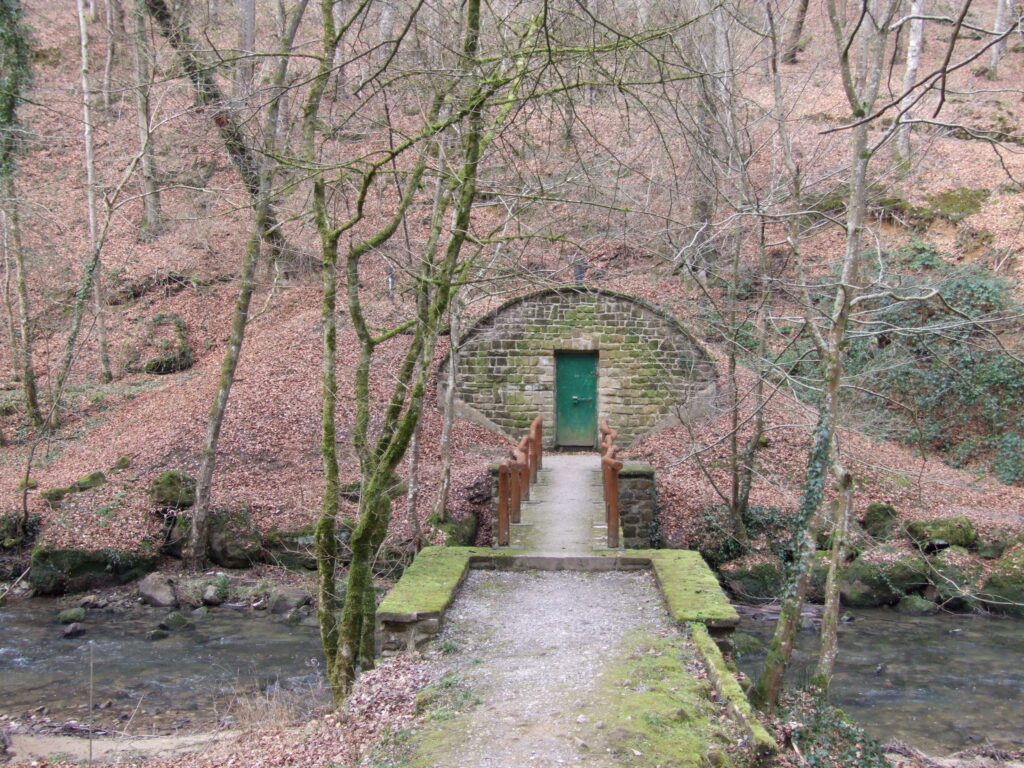
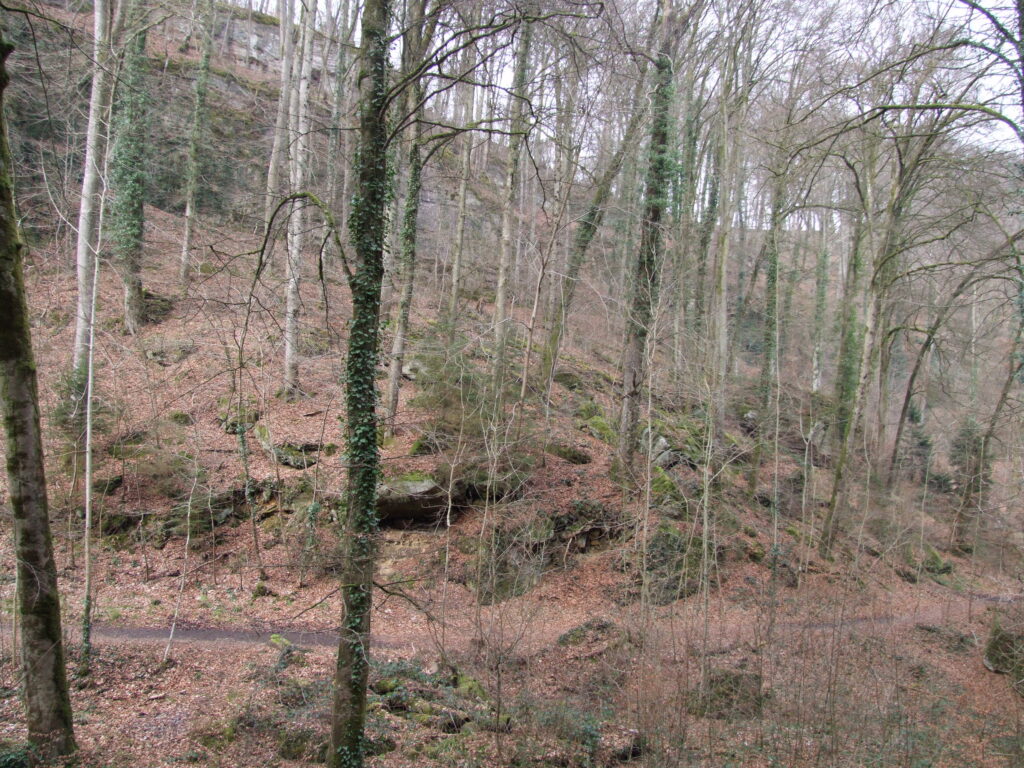
The natural stone bridge
A small three-fingered waterfall on the Black Ernz stream about 1 km upstream from the village of Müllerthal is crossed by an arched natural stone bridge. This bridge is one of the most photographed sights in Luxembourg. It was built towards the end of the 1970s by J. P. Prommenschenkel (1843 – 1937) from the nearby village of Christnach. Because of its history, it can be called a monument of historical tourism. Its construction and artistic decorations reflect the romantic views from the tourist beginnings of the region. Reliefs depicting animals and mythical creatures, such as snails and snake heads, are carved into numerous sandstones.
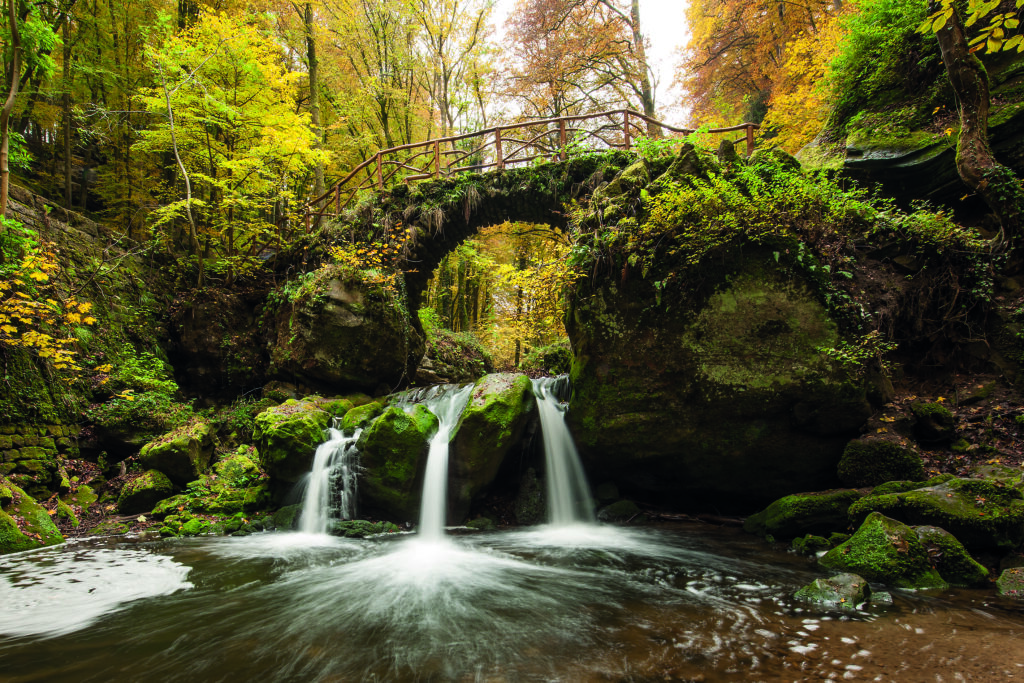
The reason given for its construction was that the inhabitants of Christnach could reach their forest plots on the other side of the river in winter during high water. A previous bridge had fallen victim to a flood. The elaborate design, the fact that the Black Ernz rarely floods for long periods of time and the fact that the state road through the valley was built around the same time suggest that other motives played a role in the construction of the bridge.
The Mullerthal Trail Routes 2 and 3 pass by the Schéissendëmpel.
